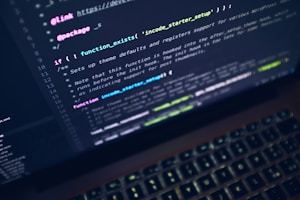Introduction
Open-source graphics software provides users with the flexibility to create, edit, and manipulate digital images and graphics. These tools are cost-effective alternatives to proprietary software like Photoshop or Illustrator, allowing users to access a wide range of features and functionalities without having to pay for a license.
In this tutorial, we will explore some popular open-source graphics software and learn how to use them effectively for various tasks.
GIMP
GIMP (GNU Image Manipulation Program) is a powerful open-source raster graphics editor. It offers a wide range of tools and features for image retouching, editing, and creation. Let's take a look at a basic example of how to use GIMP:
sudo apt-get install gimpThis command installs GIMP on a Linux system. On Windows or macOS, you can download the installer from the official GIMP website.
Once you have GIMP installed, you can open it and start working on your images. GIMP provides a user-friendly interface with various windows and panels for different tasks. You can open an image by going to the File menu and selecting Open.
file_menu = gimp.pdb.gimp_file_menu()
file_menu.open(0, 'path_to_image')This code snippet shows how to open an image programmatically using GIMP's Python scripting capabilities.
From here, you can use GIMP's extensive toolset to perform tasks such as cropping, resizing, adjusting colors, applying filters, and more. GIMP supports layers, masks, and various selection tools to help you work with complex compositions.
image = pdb.gimp_image_duplicate(current_image)This code creates a duplicate of the currently open image in GIMP. You can then modify the duplicate without affecting the original image.
Overall, GIMP provides a robust set of tools for image editing and manipulation, making it a popular choice among graphic designers, photographers, and artists.
Inkscape
Inkscape is an open-source vector graphics editor that allows users to create and edit scalable vector graphics (SVG) files. It provides a range of drawing tools, shapes, text, and effects to create detailed and professional-quality artwork.
sudo apt-get install inkscapeTo install Inkscape on a Linux system, you can run the command above. For Windows or macOS, you can download the installer from the official Inkscape website.
Once installed, you can open Inkscape and start a new project or open an existing SVG file. Inkscape provides a workspace where you can draw, manipulate objects, and apply various effects.
document = inkex.document.Document('path_to_svg_file')This code loads an SVG file programmatically using Inkscape's Python scripting capabilities.
Inkscape supports layers, transformations, gradients, and a wide range of editing tools to help you create complex and visually appealing artwork. You can also export your creations in various file formats, making it easy to share or use them in other applications.
inkscape.export.save_as(current_document, 'output_file.png')This code saves the current Inkscape document as a PNG image file.
Whether you are a graphic designer, illustrator, or hobbyist, Inkscape provides a powerful and accessible toolset to unleash your creativity.
Krita
Krita is a free and open-source digital painting software designed for artists, illustrators, and concept artists. It offers a wide range of brushes, customizable workspaces, and powerful painting tools to create stunning artwork.
sudo apt-get install kritaTo install Krita on a Linux system, you can use the command above. Windows or macOS users can download the installer from the official Krita website.
Once installed, you can open Krita and start a new project or open an existing artwork. Krita provides a customizable interface with various dockers, brushes, and toolbars to suit your workflow.
doc = Krita.createDocument(width, height, color_model, resolution)This code creates a new Krita document programmatically with the specified width, height, color model, and resolution. You can then start painting or drawing on the document.
Krita supports layers, masks, blending modes, color management, and a wide range of brush presets to give you complete creative control over your artwork. It also provides advanced features like animation support and brush stabilizers to enhance your workflow.
Krita.instance().action('file_save_as').trigger()This code triggers the "Save As" action in Krita, allowing you to save your artwork in various file formats.
Whether you are a beginner or an experienced artist, Krita offers a powerful and versatile platform to bring your vision to life.
Conclusion
In this tutorial, we have explored some popular open-source graphics software and learned how to use them effectively.
GIMP provides a feature-rich environment for raster image editing and manipulation, while Inkscape offers powerful tools for vector graphics creation and editing. Krita, on the other hand, caters to digital painters and artists with its extensive brush library and painting capabilities.
By mastering these open-source graphics software, you can enhance your creative workflow and achieve professional-quality results without breaking the bank.

